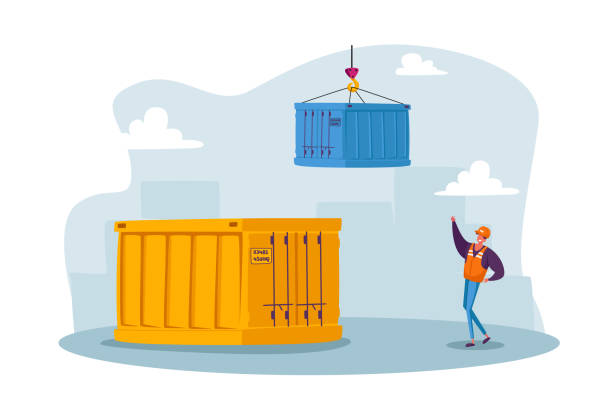Cargo container flow tracking is an essential part of the shipping and supply chain industries. By using this technology, shippers can have access to real-time information about their cargo containers’ location, providing more visibility and control over the entire process. This allows them to make better decisions in terms of routing, scheduling, as well as optimizing delivery processes.
Benefits of Tracking Cargo Containers:
What's in this article...
1. Increased Visibility:
Utilizing cargo container flow tracking provides shippers with a greater level of visibility into their supply chain, allowing them to make better decisions in terms of routing and delivery times. Additionally, being able to track the location of each individual container allows for more accurate forecasting and scheduling.
2. Improved Efficiency:
When cargo containers are tracked in real-time, it eliminates the need to manually check their locations or coordinate with multiple parties involved in the process. This can drastically reduce delays and help ensure that deadlines are met regularly.
3. Reduced Risk:
By having access to up-to-date information about a shipment’s progress, shippers can better identify any potential risks before they occur. This helps to minimize costly delays and errors that could be caused by incorrect or outdated information.
4. Enhanced Security:
Tracking cargo containers in real-time provides greater security for both shippers and receivers, as it allows them to quickly detect any suspicious activity or tampering with the shipment. By receiving alerts about a container’s movements, shippers can take immediate action if needed.
5. Cost Savings:
Utilizing cargo container flow tracking reduces expenses associated with manual data gathering, corrections, and double-checking procedures. It also increases efficiency of delivery routes resulting in less fuel usage and resulting cost savings. Additionally, tracking systems often come with features such as dynamic route optimization, which can help shippers reduce transit times.
6. Improved Customer Service:
Cargo container flow tracking increases the accuracy and timeliness of deliveries, ensuring that customers receive their orders on time and in perfect condition. This helps to improve customer service ratings, resulting in increased customer loyalty and satisfaction.
7. Less Paperwork:
Tracking cargo containers electronically eliminates the need to manually fill out paperwork for each shipment, reducing administrative costs as well as improving data accuracy. Additionally, this information can be shared more quickly with other stakeholders involved in the process, eliminating delays caused by manual communication methods.
8. Accurate Data Collection:
By tracking shipments electronically, shippers have access to accurate data regarding their cargo containers’ progress. This data can be used to identify any potential problems that could delay or disrupt the shipment, as well as help with future planning and optimization.
9. Improved Regulatory Compliance:
Tracking cargo containers electronically helps ensure that shippers are in compliance with all applicable laws and regulations, since they have access to up-to-date information about shipments at all times. This helps prevent unwanted delays due to noncompliance, resulting in smoother operations.
10. Streamlined Operations:
Cargo container flow tracking eliminates manual processes related to tracking and managing shipments, streamlining the entire process from start to finish. By automating routine tasks such as data entry, shippers can save time and focus on more important tasks. This can improve efficiency, reduce costs, and help shippers make better decisions in regards to their supply chain operations.
11. Improved Team Collaboration:
Cargo container flow tracking allows companies to share data and collaborate on the movement of their shipments in real-time. From planning routes, to dealing with unexpected delays, having access to real-time information helps teams make better decisions and improves communication across departments. This can result in fewer errors, reduced costs, and improved customer service ratings. Additionally, it helps ensure that everyone involved is working together towards a common goal.
12. Increased Agility:
Tracking cargo containers electronically also provides organizations with greater agility, allowing them to quickly adjust and respond to changing customer needs. With access to up-to-date information about their shipments, shippers can make informed decisions that will ensure timely and accurate delivery of goods. This helps keep customers satisfied while reducing overall costs.
Conclusion:
Overall, cargo container flow tracking provides many benefits for organizations across industries. From increased efficiency and cost savings to improved customer service and regulatory compliance, it has the potential to revolutionize the way that organizations manage their supply chains. By taking advantage of this technology, shippers can provide customers with better service while reducing operational costs.










